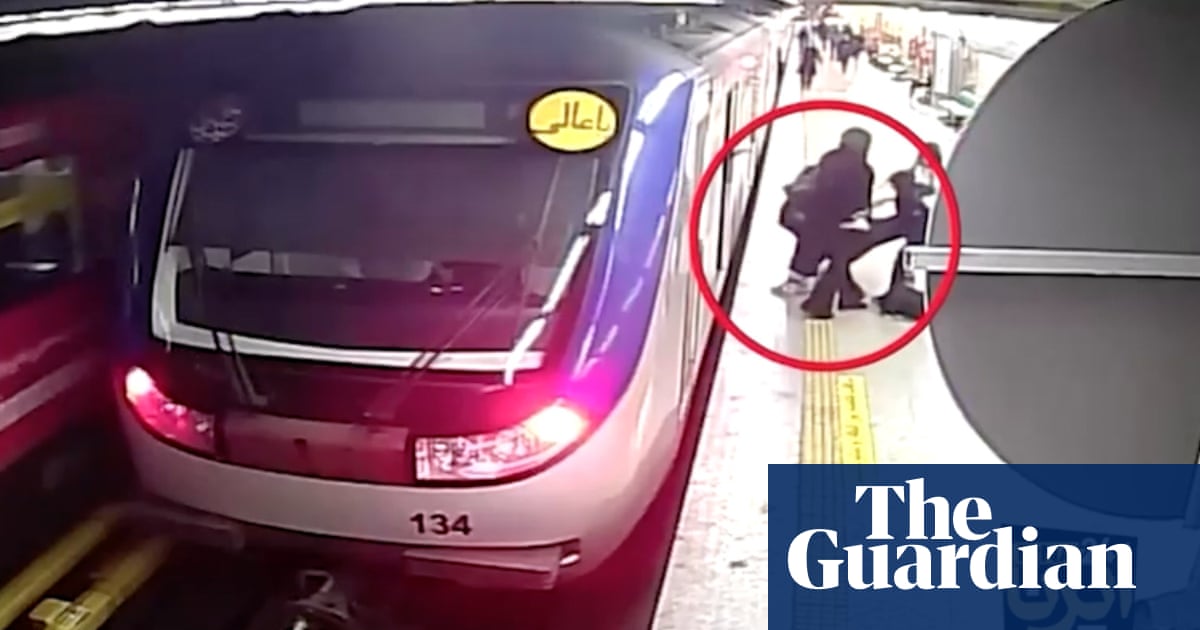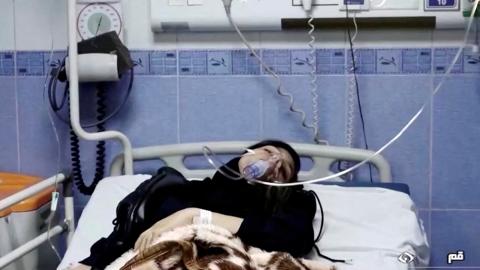
Iranian opposition figures have demanded the release of complete CCTV footage of an incident in which a 16-year-old girl, now in a coma, collapsed after a claimed encounter with hijab police on the Tehran metro.
Armita Geravand remains in hospital after the incident on Sunday. Authorities have released footage that they say substantiates their claim that Armita fainted due to a drop in blood pressure, but witnesses and rights groups abroad allege that she fell during a confrontation with agents because she was not wearing the hijab.
CCTV footage shared by the state news agency IRNA showed Armita without a hijab accompanied by two female friends walking towards the train from the metro platform. Upon entering the carriage, one of the girls is seen immediately backing off and reaching for the ground, before another girl is dragged unconscious from the cabin by passengers.
A witness claimed that soon after Armita entered the carriage a female hijab enforcer started arguing with her because she wasn’t wearing a headscarf. “The chador-clad woman screamed at her asking her why was she not covered,” the witness told the Guardian. “Armita then told her ‘Do I ask you to remove your headscarf? Why are you asking me to wear one?’ Their argument then turned violent. The hijab enforcer started physically attacking Armita and … violently pushed her.”
Another witness said Armita was still conscious when she fell on the ground. Witnesses claimed they spotted the same hijab enforcer waiting behind the ambulance that took Armita to the hospital.
State news has not carried any footage from inside the train itself and offered no explanation on why it hadn’t been released. Most train cars on the Tehran metro have multiple CCTV cameras, which are viewable by security personnel. Opposition figures say the clock on the footage shows at least 100 seconds is missing.
The human rights group Hengaw said Armita’s mother, Shahin Ahmadi, had been arrested on Wednesday and that her whereabouts was unknown. Iran’s semi-official Tasnim news agency denied the claim, which could not be verified. If Ahmadi has been detained it would suggest that authorities fear she did not believe the official narrative of what happened to her daughter.
In an interview broadcast on Tuesday, Ahmadi said her daughter had collapsed due to a fall in her blood pressure, but activists said they feared her testimony had been staged.
Rights groups fear that Armita might face the same fate as Mahsa Amini, a 22-year-old woman whose death in a coma last year in the custody of morality police sparked months of nationwide protest. In another echo of the Amini case, a journalist from the Shargh newspaper, who tried to investigate the incident, was briefly detained.
“Her friends and family are under pressure,” one witness said. “I don’t expect them to reveal the truth after what happened to Mahsa’s family.”
Narges Mohammadi, a women’s rights activist serving a 10-year jail sentence in Evin prison in Tehran, said on Instagram that the “government’s behaviour shows its desperate attempt to prevent the truth … from being revealed”.
The case has begun to draw international attention, including from the German foreign minister, Annalena Baerbock, who tweeted: “Once again a young woman in #Iran is fighting for her life. Just because she showed her hair on the subway. It’s unbearable.”
Abram Paley, the US deputy special envoy for Iran, tweeted that he was shocked by the reports that the “so-called morality police” had assaulted Armita. He added: “The reported arrest of reporter Maryam Lotfi while investigating this assault is also unacceptable and an affront to journalistic freedoms. The Iranian regime should spend more time worrying about how it treats its own people rather than how the media covers its abuses”.
Iran has returned its morality police and hijab enforcement agents to the street in recent months as lawmakers push to enforce even stricter penalties for those flouting the head-covering requirement.
Hengaw claimed that the security guards responsible for policing the hijab at the Tehran metro station where Armita was injured had not reported for work, but it has not been possible to confirm this independently. She was taken to the nearby Fajr hospital, which is now under heavy guard.
Nasser Kanani, a spokesperson for the Iranian foreign ministry, described western countries’ concern about the situation of Iranian women “interventionist, biased and dishonest”.
Iran’s few remaining independent newspapers, under ever heavier censorship, have not reported extensively on what happened, but Etemaad, a reformist paper, challenged the government to explain why reporters were being prevented from carrying out their constitutional duty to seek the truth.
A trade union for teachers said in a statement on Wednesday that the ministry of education’s security director had visited Armita’s school and threatened her teachers. “He emphasised that sharing any news or photos of Armita Geravand on social media by her teachers would result in heavy fines and the immediate termination of their contracts,” the union said.












